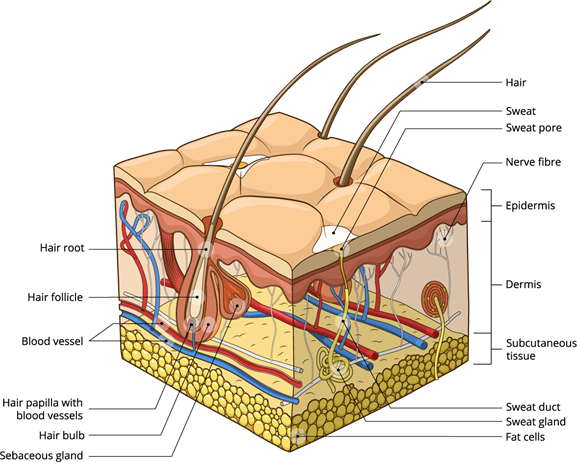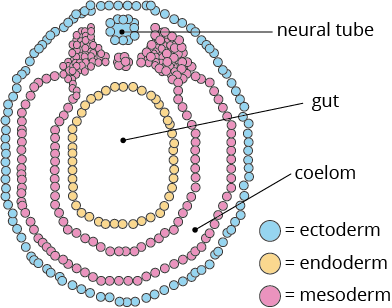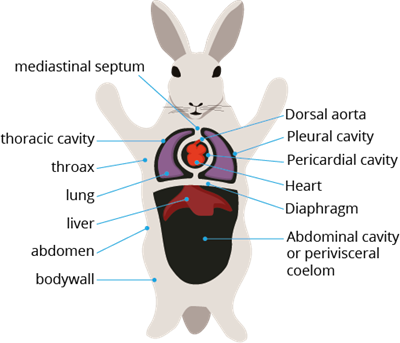
PUMPA - SMART LEARNING
எங்கள் ஆசிரியர்களுடன் 1-ஆன்-1 ஆலோசனை நேரத்தைப் பெறுங்கள். டாப்பர் ஆவதற்கு நாங்கள் பயிற்சி அளிப்போம்
Book Free DemoThe fact that practically every mammal species on Earth, from antelopes to zebras, and even humans, is covered with structures known individually as 'hairs' and collectively as 'fur' is one of their most distinguishing characteristics. These hairs or furs are covering the skin of the mammal.
Also, the skin has specific modifications at the tips of the limbs as nails and claws. The mammal's integument is made up of hairs, furs, nails, and claws that run along the skin. In this topic, we are going to study the integument of the rabbit.
Integument (Skin):
All vertebrates have an outer protective layer covering their bodies. The integument, often known as skin, is the body's outer layer responsible for maintaining its shape. The skin is thick and covered with hairs.

Cross section of rabbit skin
Various structures like hairs, claws, nails and different glands such as sweat glands, sebaceous glands, and mammary glands are derived from the skin.
Terms related to the integument:
| Hair |
|
| Claw |
|
| Nails |
|
| Mammary glands |
|
| Sweat glands |
|
| Sebaceous gland |
|
Important!
The body temperature is controlled by sweat glands and sebaceous glands embedded in the skin.
Functions of the Integument:
- It aids in maintaining body shape.
- It protects the body's organs from mechanical damage. It also works as a germ-proof coating for the body, preventing bacteria and other germs from entering.
- Claws, horns, nails, and hooves are skin derivatives as digging tools and offensive and defensive weapons.
- Sweat glands in the skin help in body temperature regulation by draining sweat.
- The skin helps to remove metabolic wastes from the body.
- The skin acts as a secretory organ. For example, milk is produced in the mammary glands, and the sebaceous gland secretes sebum, an oily secretion that protects the skin and hair from moisture.
- It aids in the process of sexual selection. The colour and structures of the integument attract the opposite sex.
- The skin's sensory function is provided by fine nerve endings and unique tactile corpuscles in the integument. It is stimulated by touch, pain, pressure, temperature, etc.
- In the presence of sunlight, the skin can also synthesis vitamin D.
Coelom (Body cavity):
The coelom is the space between the intestinal canal and the body wall of animals.

Coelom of vertebrate embryo
Rabbits belong to the coelomate family of animals. The body of the rabbit is divided into the thoracic cavity and abdominal cavity. They are separated by a transverse partition known as the diaphragm.
The diaphragm is one of the characteristic features of mammals.
The movement of the diaphragm causes breathing movements. The coelom is lined by the outer parietal and inner visceral epithelium, covering and enclosing all the organs. The thoracic cavity holds the heart and lungs, while the abdominal cavity encloses the digestive and urinogenital systems.

Body cavity of rabbit